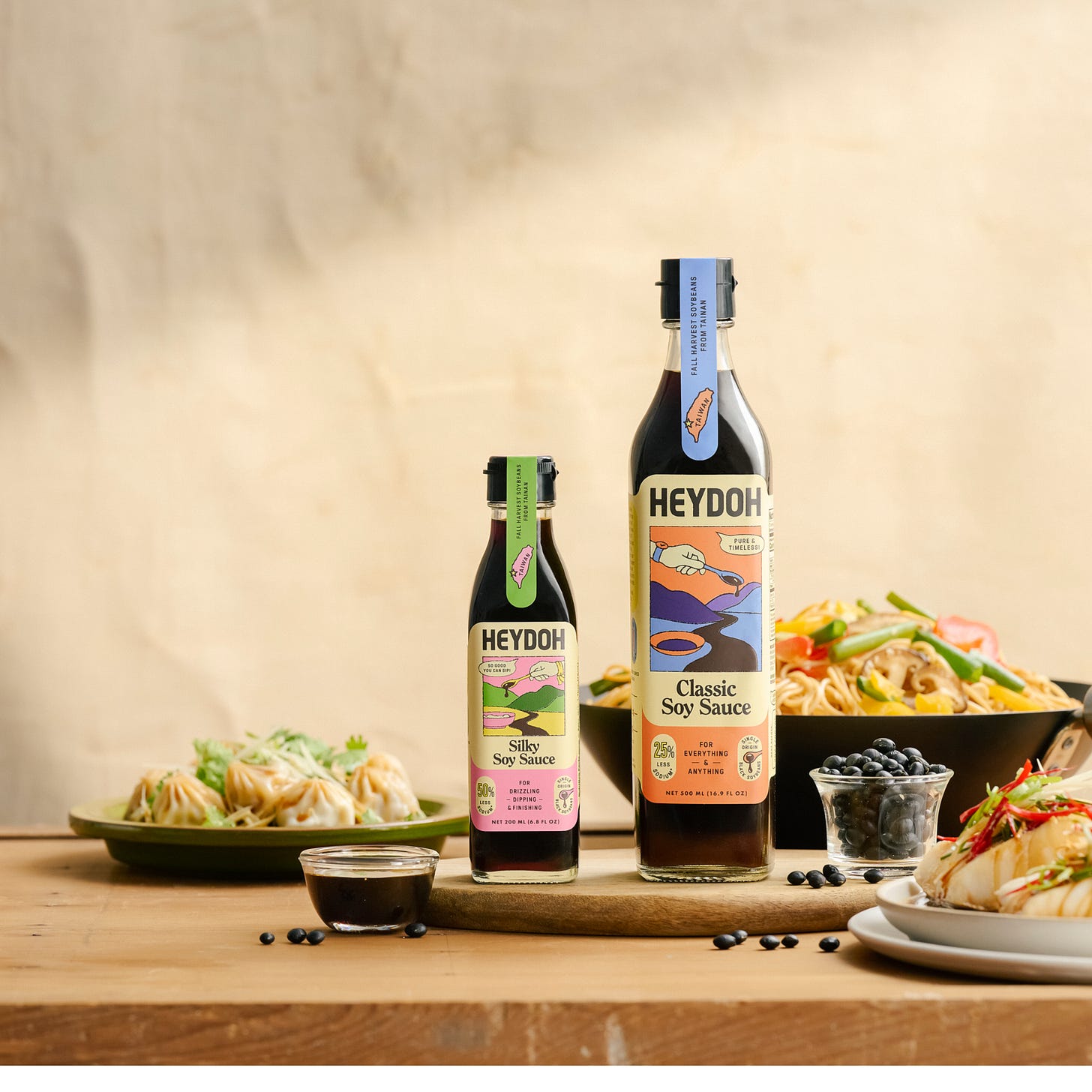Why I started a soy sauce company
Part 1
My epiphany came in the early summer of last year, at my family’s cottage in Sweden on our annual vacation. I was sitting in the study, and through the window I could see my husband crouched on the front lawn, a leaf between his teeth, trying to coax our determined, cherubic baby through his very first steps. Meanwhile, I was in front of my computer, staring at my inbox and income statement for the year and feeling a sense of dread.
For the past decade, my workflow looked like this: spend days crafting pitches and sending really thoughtful emails, wait for an editor to eventually bite, schedule calls and interviews, then spend an unhealthy amount of time wrestling the words onto the page. After I filed the story and worked through the edits, I’d wait for the check to arrive a month later, though more often two or three months, if we’re being honest.
As a writer, unless you’re extraordinarily gifted (which I am not), most of the work is an internal battle that requires long, uninterrupted stretches of quiet. Once I became a mother, I lost the luxury of time and the bandwidth to chase anyone except my own kid. I’ll always appreciate a good byline, but the opportunity cost stopped making sense.
I still loved writing, but I needed a different life, one where the work I put in had a clearer relationship to the outcome. And the idea that kept circling back was soy sauce.
As a business idea, soy sauce had been on my mind while I was developing recipes for my first cookbook Made in Taiwan. It’s a core pantry ingredient, with a global market larger than that of olive oil. Yet in the States, most grocery stores are stocked with the same old brands that have been around for 50 years. Naturally brewed yes, but mostly made with crushed yellow soybean grits, a byproduct of the industrial cooking oil industry. Many of the big brands also have added alcohol or preservatives or food coloring.
I’m not here to ingredient-shame. There’s nothing inherently wrong with defatted soybeans or preservatives. There will always be a market for that. But living in Taiwan opened my eyes to the sheer range of soy sauces out there—some of them as nuanced and complex as fine wine. And, as any cook can tell you, when you start with better ingredients, your food simply tastes better.
I had just landed my second book deal and was back in recipe development mode in the Swedish countryside. I was working with the standard Asian pantry staples (soy sauce, rice wine, sesame oil, rice vinegar) from the nearest grocery store. Even though we lived in a fairly remote town, the selection was the same as what you’d find in a large American supermarket. But if you tasted any of them straight, the flavors were flat, saline, and sharply acrid. It made me wince.
When I returned to Taiwan, I began sourcing more deliberately and tasted widely. And I found that truly well-made pantry staples are pleasurable, not just passable. Much like a high-quality olive oil, the flavors have depth, balance, and ease. The soy sauces I encountered were round, savory, so good you can sip. The contrast wasn’t just subtle, it was absolute.
Except I still defaulted to the standard brands for recipe development. Because when you’re writing for a general audience, as much as you can, you have to use mainstream pantry staples.
Up until this point, I had spent a decade covering Taiwanese and Chinese cuisine and watching Asian Americans push back against the idea that our food should be cheap. We’ve championed our cooking as worthy of craft, care, and technique. And yet, for some reason, our pantry aisle hasn’t caught up. And I’m not referring to the chili crisps and the shortcut stir-fry sauces. I mean our very core, fundamental staples, like soy sauce. We’ve gotten used to a baseline that is entirely defined by commodity agriculture and industrial shortcuts. We accept generic soybeans when there are varietals that express dramatically different flavor profiles.
Plenty of food aficionados will shell out for Spanish olive oil, Italian tinned fish, even algae oil, but almost no one will go out of their way for a single-origin soy sauce.
And it’s not for lack of effort, either. There’s already a robust range of artisanal soy sauces in the U.S. They’re just not very approachable. The market basically splits into two camps: the $5 supermarket staples like Kikkoman, and the high-end $40 gourmet bottles. The latter are often excellent, but their marketing leans heavily on mystique rather than clarity—pretty labels, foreign script, and vague claims like “premium” or “barrel-aged” that tend to intimidate home cooks more than they inform or inspire them.
Being based in Taiwan and fluent (enough) in Chinese gave me access to suppliers and context most people don’t have.
And as a writer and journalist, I felt confident that I could tell the story of quality soy sauce more clearly.
I saw an opportunity.
So I began assembling a team.



Loved reading this story! I have always wondered why soy sauce is such limited category even in the best of Asian markets. I branched out to Momofuku but I am looking for more variety - just as I would with chili crisp, vinegars and oils. cannot wait to try!
Ordered a set of 2! Really excited for this product and congratulations 🩷